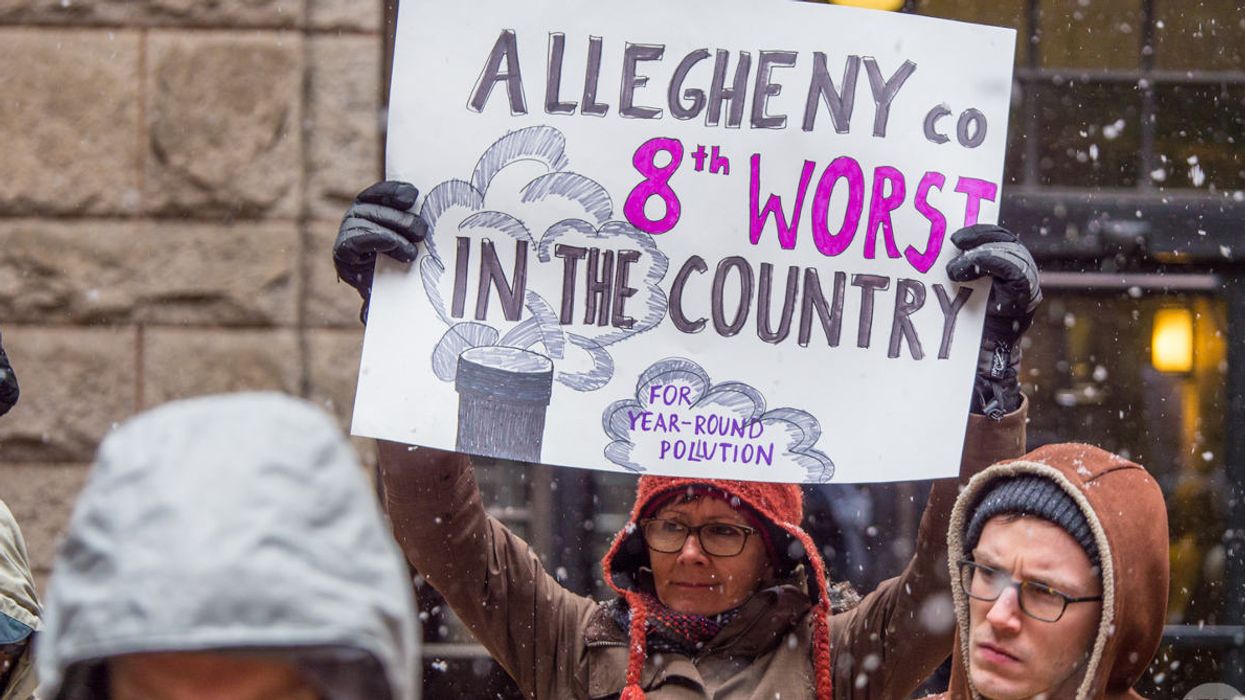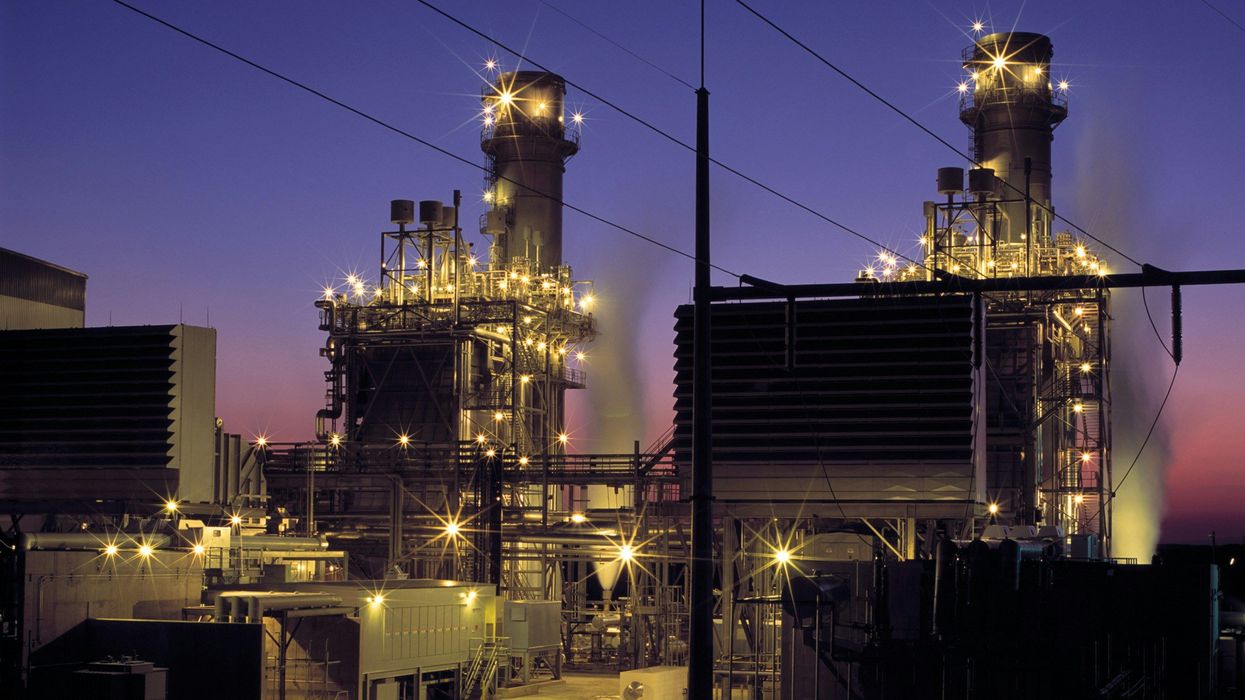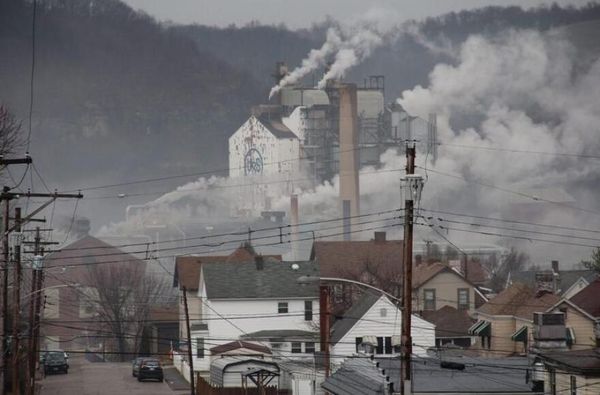PITTSBURGH—At a time of year when people are desperate to get outside to beat the winter blues, residents here with asthma and other respiratory illnesses have been repeatedly told the air outdoors threatens their health.
Air pollution warnings have been issued on at least nine of the 35 days of 2019 that have passed so far, or about 25 percent of the New Year.
"I think what's most frustrating to people—other than the really bad odors in the air—is being told to stay indoors for some indefinite period of time if they want to stay safe," Matt Mehalik, executive director of the Breathe Project, a coalition of 24 environmental organizations, told EHN. "People are really frustrated by that order and people are seeking answers."
Monday afternoon the Pennsylvania Department of Environmental Protection issued a Code Orange Air Quality Action Day for
20 counties due to high levels of particulate matter pollution (tiny, airborne particles of chemicals that cause heart and respiratory problems when inhaled). Allegheny County, which encompasses Pittsburgh, was one of them.
The U.S. Environmental Protection Agency's standardized air quality index uses colors to report daily air quality. Green is good; yellow means moderate; orange represents unhealthy pollution levels for sensitive people; and red warns of unhealthy pollution levels for all.
"Young children, the elderly and those with respiratory problems, such as asthma, emphysema and bronchitis, are especially vulnerable to the effects of air pollution and should limit outdoor activities," the agency stated in its press statement.
People with heart disease are also especially vulnerable to the effects of particulate matter pollution, which can cause heart attacks, according to the U.S. Centers for Disease Control and Prevention (CDC).
While this warning impacts many Pennsylvania residents, Allegheny County has some of the worst air quality in the country. It was one of only 10 counties in the nation to receive all F's on the American Lung Association's 2018 air quality report card, and last year Pittsburgh was one of just six regions in the country where year-round particulate pollution increased rather than decreased since the last report.
As a result, Pittsburgh's asthma rates significantly outpace national averages, and the county is in the top 3 percent of all U.S. counties for the risk of cancer caused by air pollution.
The Allegheny County Health Department, which oversees air quality in the region, announced in the middle of January that it would begin using the Allegheny Alerts system "more proactively" to notify residents of air quality issues. The move came after the agency faced criticism for making important announcements on Facebook about dangerous levels of sulfur dioxide air pollution following a fire at a U.S. Steel facility.
Since that announcement on January 16th, residents of the county have been notified that weather conditions were likely to cause "poor air dispersion," and that "residents, particularly those with existing respiratory conditions may need to limit their outdoor activities" due to the potential for high levels of air pollution from either sulfur dioxide (SO2), particulate matter (PM 2.5), or both.
Similar warnings were issued for January 17, January 19, January 22, January 23, February 1, February 2, and February 3. The PA Department of Environmental Protection issued their "Code Orange" warning for the county on February 4. The County Health Department has already issued another warning for February 5.



Both SO2 and PM 2.5 pose the greatest immediate risk to children, the elderly, and those with heart and respiratory illnesses, but healthy people may also experience health impacts from repeated exposure.
Respiratory irritation from SO2 exposure induces symptoms like sneezing, sore throat, wheezing, shortness of breath, chest tightness, and a feeling of suffocation, according to the CDC, and particulate matter pollution has been linked to eye, lung and throat irritation, low birth weights, and lung cancer.
"I think it's the job of local elected officials to act as protectors of our health, and that should be the highest priority," Mehalik said. "To date this year it just doesn't seem like that's the case. I think the anger lies with the perception that leaders are siding with polluters instead of people. Everyone knows air pollution is bad for their health, and we want our leadership to take action."
- ER visits for asthma dropped 38% the year after one of Pittsburgh's ... ›
- What do politicians have to say about Pittsburgh's asthma epidemic ... ›
- Coke plant pollution linked to “asthma epidemic” in Pittsburgh-area ... ›
- Breathless: Pittsburgh's asthma epidemic and the fight to stop it - EHN ›
- Air pollution reporting wins top award - EHN ›


























